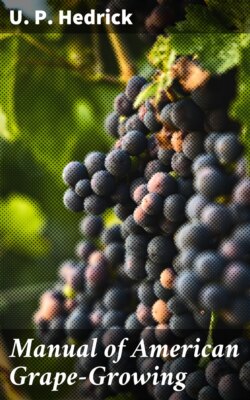Читать книгу Manual of American Grape-Growing - U. P. Hedrick - Страница 59
На сайте Литреса книга снята с продажи.
Grafting
ОглавлениеSince grafting grapes is intimately connected with stocks, the growing of which is a modern practice, grafting is thought of as a new process in growing this fruit. Quite to the contrary, it is an old practice. Cato, the sturdy old Roman grape-grower who lived nearly two hundred years before Christ, speaks of grafting grapes, although Theophrastus, the Greek philosopher, wrote a hundred years before "the vine cannot be grafted upon itself." However, until it became necessary to grow Vinifera grapes on resistant stocks to avoid the ravages of phylloxera, grafting the grape was not at all common among vineyardists and is not now except where vines susceptible to phylloxera must be grown in consort with roots resistant to this insect, or to modify the vigor of the top by a stock more vigorous or less vigorous. For these two purposes, grafting is now in some grape regions one of the most important vineyard operations.
In grafting the grape, there is a time and a way, not so particular as many believe, but rather more particular than in grafting most other fruits. If the essentials of grafting are kept in mind, one has considerable choice of details. Grafting consists in detaching and inserting one or several buds of a mother plant on another plant of the same or a similar kind; the bud stock is the cion, the rooted plant is the stock. The essentials may be set forth in three statements: First, the prime essential is that the cambium layers, the healing tissue lying between the bark and wood, meet in the cion and stock; second, that method of grafting is best in which the cut tissues heal most rapidly and most completely; third, the greater the amount of cambium contact, as compared with the whole cut surface, the more rapidly and completely the wounds will heal. Out of a great many, the following are a few of the simplest methods in use in grafting the grape, any one of which may be modified more or less as occasion calls.
